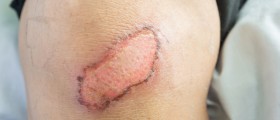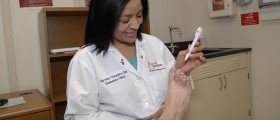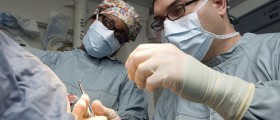
Staph infection is an infection caused by bacterium Staphylococcus. These bacteria are normally found on the skin around the mouth, nose, genitals and anal area. In some people bacteria may be normally found inside the nasal cavity. If these people do not develop infection and still have bacteria in the nasal cavity they are called carriers and they can cause spread of the bacteria.
The infection is generally caused by entrance of the bacteria and onset of their multiplication in case of cuts, wounds and any kind of damage to the skin. Many people wonder whether staph infection is contagious or not. The infection is contagious and can be transmitted if one is in contact with an infected wound and contaminated items. The infection is not air born. Staph infection usually develops in a form of skin boils and callulitis. Only in severe cases, if the bacteria are resistant to many antibiotics, the infection may develop in the form of flesh-eating infection.
Staph Infection: Presentation
Delay in healing of wounds, cuts or similar injuries, especially if they become edematous, red and painful, points to the presence of infection. Staph infection basically begins as a small red area which is tender and gradually becomes more swollen. In some cases skin infection is in a form of open sores. Staph infection can be also in a form of furuncle, carbuncle and abscesses. If the infection has spread to deeper tissues it causes cellulitis.
Staph Infection: Treatment
Since staph infection represents a bacterial infection it is treated with suitable antibiotics. The doctor must pay attention and in case infection is caused by methicillin-resistant Staphylococcus aureus patients are prescribed only antibiotics which are confirmed by antibiogram to be effective against this particular type of Staphylococcus.
Staph Infection: Prevention
Even though staph infection is contagious it can be easily prevented with several methods.
Each and every person is supposed to maintain impeccable hygienic habits. Medical professionals who are in touch with patients suffering from staph infection must use protective gloves and properly sterilize instruments. This way neither they nor other patients can develop staph infection. Patients are strictly forbidden to touch wounds or cuts with bear hands. This increases the risk of contamination of the wound and subsequent staph infection.
Sharing personal items (razors, towels etc) is also a potential way of spreading the infection. Each and every person must have his/ her own razor, towel and other personal items. Sharing of personal items is particularly forbidden in hospitals among patients where the risk of staph infection can be even higher.

















Your thoughts on this
Loading...